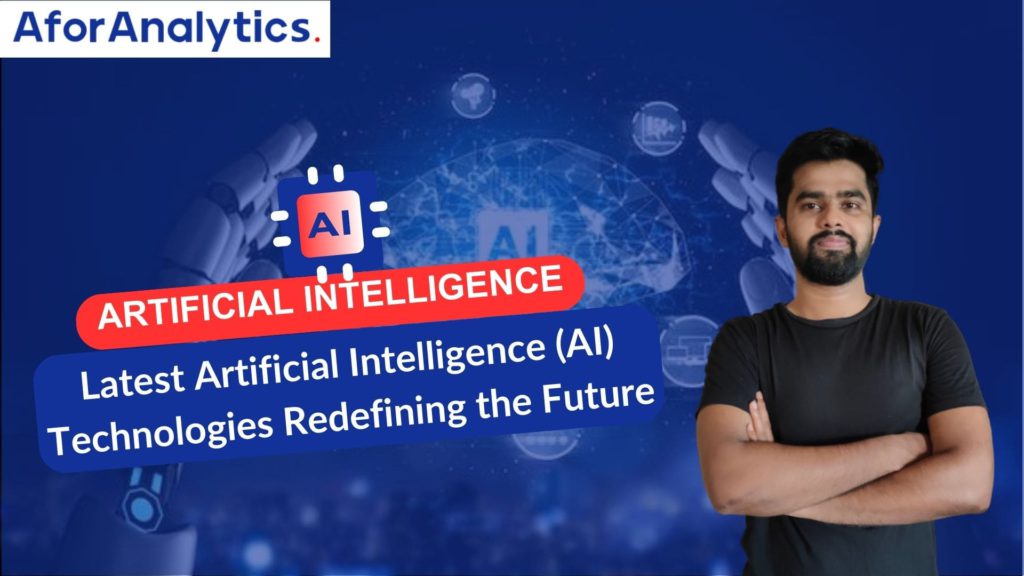
Introduction to Artificial Intelligence
- Artificial intelligence is advancing at a rapid pace, with new technologies emerging every day.
- These latest AI technologies are redefining the future of industries and changing the way we live our lives.
- In this blog, we will explore some of the latest AI technologies that are making waves and transforming the world.
Machine Learning for Artificial Intelligence
- Machine Learning (ML) is one of the most exciting developments in artificial intelligence, involving teaching machines to learn from data and improve their performance over time.
- It is transforming industries such as healthcare, finance, and marketing by enabling businesses to make more informed decisions and improve efficiency.
Deep Learning
- Deep Learning, a subfield of Machine Learning that focuses on teaching machines to learn by example, is revolutionizing fields such as image and speech recognition.
- It involves using artificial neural networks to process data and identify patterns, allowing machines to recognize images, understand speech, and make decisions.
- Deep Learning is now being used to develop autonomous vehicles and natural language processing systems.
Reinforcement Learning
- Reinforcement Learning, a type of Machine Learning, involves training machines to make decisions by rewarding them for good behavior and punishing them for bad behavior.
- It is commonly used in robotics, gaming, and decision-making systems.
- Reinforcement Learning is enabling machines to learn complex tasks such as playing chess, driving cars, and flying drones.
Natural Language Processing (NLP)
- Natural Language Processing (NLP), a branch of artificial intelligence, focuses on enabling machines to understand and process human language.
- NLP is transforming industries such as customer service, healthcare, and marketing by enabling machines to analyze large amounts of text data, understand customer sentiment, and automate routine tasks.
Sentiment Analysis
- Sentiment Analysis, a subset of NLP, involves teaching machines to understand the emotional tone of written or spoken language.
- It is used in fields such as marketing and customer service to analyze customer feedback and gauge customer satisfaction.
- Sentiment Analysis is enabling businesses to respond to customer needs more effectively and improve customer experience.
Text-to-Speech (TTS)
- Text-to-Speech (TTS), a technology that enables machines to convert written text into spoken language, is being used in fields such as education, entertainment, and healthcare to develop interactive voice assistants, audiobooks, and language learning apps.
- TTS is improving accessibility for people with visual impairments and helping businesses to communicate more effectively with their customers.
Computer Vision
- Computer Vision, a field of artificial intelligence, focuses on enabling machines to recognize and interpret visual data from the world around them.
- Computer Vision is transforming industries such as manufacturing, healthcare, and retail by enabling machines to automate routine tasks and improve efficiency.
Object Detection
- Object Detection, a subset of Computer Vision, involves teaching machines to recognize and locate objects within an image or video.
- It is being used in fields such as autonomous vehicles, security, and surveillance to detect and track objects of interest.
- Object Detection is improving safety and security in a wide range of applications.
Image Classification
- Image Classification, another subset of Computer Vision, involves teaching machines to recognize and classify images based on their content.
- It is being used in fields such as healthcare, agriculture, and manufacturing to analyze images and identify patterns.
- Image Classification is improving efficiency and accuracy in a wide range of applications.
Conclusion
- The latest AI technologies are redefining the future by enabling machines to learn, understand, and interact with the world around them.
- These technologies are transforming industries and improving the way we live our lives.
- From Machine Learning to Natural Language Processing to Computer Vision, the possibilities are endless.
- As AI continues to evolve, we can expect even more exciting developments and applications in the field of Artificial Intelligence.
